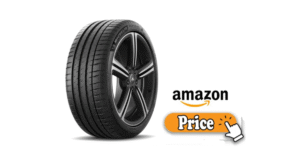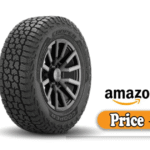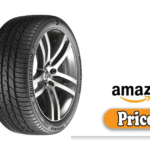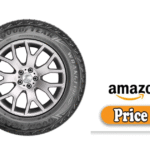When it was time to replace the tires on my car, I did what many drivers do: researched, compared, and hesitated. Among the brands I considered, Michelin stood out repeatedly in reviews, forums, and advertisements. But marketing and hearsay don’t always match real life.
In this article, I’ll share my honest experience of buying Michelin tires, what I liked, what could be better, technical impressions, and whether I’d recommend them to you if you decide to buy Michelin Tires.
This isn’t an academic test or lab review; it’s a real-world account. I hope that it gives you useful insight with strengths and caveats as you deliberate your own tire purchase.
Here’s what I’ll cover:
- What I Like about Michelin tires
- What Could Be Better (i.e., drawbacks)
- My Personal Experience (how they performed over time)
- Design (what makes a Michelin tire tick)
- Performance (on dry, wet, varying surfaces)
- Build Quality (materials, wear, durability)
- Alternative Option (if Michelin doesn’t suit you)
- Final Thoughts
I’ll also conclude with a mini FAQ to address common questions people have about Michelin tires. Let’s dive in.
What I Like
Here are the features and attributes I appreciated most after switching to Michelin tires.
- Quiet and Smooth Ride
One of the first things I noticed was how much quieter the car became. Road noise, especially on coarse asphalt, was reduced markedly. The tires seemed to absorb minor imperfections in the road more gracefully than my previous set, giving a smoother ride during normal driving. Many users echo this sentiment: for example, owners of the Michelin Primacy All Season report that these tires are “quiet, give a comfortable ride” and “no signs of unusual wear.” - Strong Wet Traction and Confidence
During rainy drives and on damp asphalt, the Michelins delivered predictable grip. I felt more confident when cornering and braking in light showers. In forums, users of the Michelin CrossClimate2 often praise its performance across wet, snowy, and variable conditions. One reviewer said:
“Excellent traction and handling in all road conditions. Short stopping distances. Secure handling in high wind. Also, these are nicely quiet tires.”
That mirrors what I experienced in monsoon conditions: the car tracked well, and I didn’t sense any surprising loss of grip. - Longevity (so far, at least relative to expectations)
Michelin is often marketed as a premium brand whose tires last longer than average. I haven’t yet pushed mine to their limit, but after tens of thousands of kilometers, tread wear has been gradual and uniform. There’s no obvious cupping or pattern wear so far (though long-term performance remains to be seen).
In community reviews, owners of Michelin tires sometimes reach high mileage before replacement. However, this effect depends heavily on driving style, maintenance (rotations, inflation), and road conditions. - Strong Brand Reputation & Warranty Support
Michelin has a solid reputation as a premium “Tier 1” tire maker (along with Bridgestone, Continental, Goodyear, and Pirelli). Many people feel they are paying a premium for reliability, engineering, and peace of mind. In consumer reviews, criticisms of other brands occasionally mention quality control or durability; Michelin less frequently faces those complaints.
Technological Innovation
Michelin is not just resting on its legacy; it implements features to keep grip even as the tire wears. For instance, the Premier A/S line incorporates grooves that expand as the tread wears, helping maintain wet-weather performance.
Additionally, Michelin has developed interesting technologies (though not always in mass use) like the Tweel (an airless tire concept) and the Bib-Mousse run-flat foam for off-road bikes.
These developments indicate a commitment to R&D, which gives me more confidence in their product roadmap.
 👉🏿👉🏻 Check The Latest Price and Offer at Amazon 👈🏻👈🏿
👉🏿👉🏻 Check The Latest Price and Offer at Amazon 👈🏻👈🏿
What Could Be Better
No product is perfect. From my experience and what I’ve read, here are some weaknesses or caveats worth noting when you buy Michelin Tires.
- High Price / Premium Cost
The most obvious downside is cost. Michelin tires tend to be significantly more expensive than mid-tier or bargain brands. You’re paying for brand, engineering, and perceived longevity. If your driving habits are light or your budget is tight, that premium may not fully pay off. Many users, especially in online forums, mention that the difference in real-world performance may not always justify double the price. - Dry Rot / Aging Vulnerability
Some owners caution that if a car sits unused for long periods, Michelins may develop dry rot (microcracks) in the sidewall or lose elasticity over time. One tire technician commented:
“The biggest problem with Michelin tires is dry rot … I don’t recommend them if the car sits for long periods outside.”
If you don’t drive often or park outdoors under harsh sun, this is something to watch out for. - Wear vs. High-Performance Expectations
Although I’ve had acceptable wear, I have seen people report faster-than-expected tread loss under aggressive driving or in demanding terrain. For example, in reviews for the Michelin LTX Trail series, some users noted that the tires were already near the wear bars after 30,000+ miles.
The wear performance depends heavily on how you drive, how often you rotate the tires, road roughness, and how well you maintain them (inflation, alignment). If you’re pushing hard often, the premium may get eaten by early replacement. - Flat Repairs / Handling Sharp Impacts
Because of the premium compound and advanced structure, sometimes repairing a puncture (especially in certain zones) can be trickier and costlier. Also, when hitting potholes or sharp edges, premium tires often reveal weaknesses in local road quality more starkly than softer, more forgiving tires. In forums, some mention sidewall damage or chipping as a risk. - Overrating / Hype vs Diminishing Returns
Some voices caution that people tend to overrate Michelin. One Reddit user said:
“Overrated. Not saying they aren’t good, but people hold them so high and really exaggerate it.”
In other words, at a certain point, your returns (in noise reduction, grip, longevity) may plateau, and you may be better off opting for a lower-tier brand that gives you “good enough” performance for less money.
My Personal Experience
Here’s a more chronological account of how things went after I switched to Michelin tires.
Installation & Break-in Period
When I had the Michelins mounted, the shop balanced them carefully and recommended driving gently for the first few hundred kilometers to let the beads seat properly.
In the first few days, I avoided aggressive cornering. After about 300 km, the tires started to feel settled. They felt more planted, and I noticed fewer micro-vibrations even at higher speeds.
Daily Driving (Mixed Use)
I drive in a variety of conditions: city commuting, occasional highway, occasional hilly terrain, and seasonal rains. Over several months (roughly 20,000–30,000 km at present), here’s what I noticed:
- Consistency: The behavior of the tire didn’t change drastically under moderate load. Whether I carried passengers or light cargo, the grip and handling remained reliable.
- Noise & Comfort: Even on rough patches or expansion joints, the ride stayed comfortable. As I mentioned earlier, road noise was noticeably lower than with my previous set.
- Braking & Stability: I felt more confident in braking from highway speeds, particularly on wet roads. Stability during cornering, even in mild rain, was better than before.
- Tread Wear: After tens of thousands of kilometers, the wear pattern is even. No cupping or “one side wearing more” issues. But I do rotate more aggressively (every 5,000–7,000 km) and monitor alignment.
Challenges I Faced
- Pothole Strikes: A few deeper potholes left small marks on the sidewalls. They’re superficial so far, but they made me more cautious.
- Pressure Maintenance: The tires are sensitive to under- or over-inflation. I ended up checking pressures more often than before (monthly), adjusting for load and temperature.
- Initial Cost vs. Replacement Anxiety: Because I paid more upfront, I found myself mentally juggling the cost vs. value trade-off. Every extra thousand km is psychologically valuable.
After One Year (so far)
Approaching a year in, I don’t regret the move. The tires still feel solid, the tread depth is healthy, and the ride quality remains excellent. If the long-term wear ends up matching expectations or even exceeds them, I’ll feel justified in the investment.
Design
To understand why Michelin performs the way it does, it’s helpful to peek under the hoo,d i.,e. Review how these tires are engineered.
Materials & Compound
Michelin uses premium rubber compounds often enriched with silica, oils, and modifiers to balance grip, durability, and rolling resistance. The exact formulas vary by model (touring, performance, all-season, etc.). These compounds are optimized to maintain flexibility across temperature ranges, which helps grip in both heat and cold.
Some of their designs include self-renewing grooves or expanding groove technology, which allow new drainage channels to open as tread wears, helping maintain wet grip even in later tread life. (Michelin’s Premier A/S is a known example)
Tread Patterns & Siping
Michelin invests considerable effort in tread design. Their patterns often incorporate multiple elements:
- Longitudinal grooves for channeling water away.
- Lateral sipes and microgrooves to enhance biting edges.
- Rigid ribs for stability and steering feedback.
- Shoulder blocks for cornering grip.
In their performance lines, Michelin may also use asymmetric or directional patterns to optimize handling and evacuation in wet/dry scenarios.
The engineering philosophy is to maintain balanced performance rather than optimizing one metric at the expense of others.
Internal Structure (Carcass & Sidewalls)
Inside the tire, multiple layers of belts, plies (often including steel and aramid or reinforcing textiles), and a liner combine to deliver stability, load capacity, and durability.
Sidewall design tends to aim for a balance: firm enough to resist deformation under load or cornering, but compliant enough to soak up shocks and reduce harshness. Premium tires like Michelin tend to have more refined sidewall control, which helps in overall ride feel.
Innovation & R&D
Michelin’s investments in future tire tech are noteworthy:
- Tweel — an airless tire concept. While not yet common in consumer vehicles, it shows Michelin’s willingness to explore new frontiers.
- Bib-Mousse — specialized internal foam run-flat for off-road bikes, used in rally and extreme terrain contexts.
- Materials & Eco-Initiatives — Michelin increasingly uses renewable or recycled materials in their compounds and molds, which is relevant for sustainability-conscious buyers.
All this tells me that buying into Michelin isn’t just about the current model; you’re buying into a brand that plans.
Performance
This is where things get interesting. A tire’s theoretical stats matter, but what really counts is how it behaves on the road. Here’s how Michelin fared in various real-world domains.
Dry Road Performance
On dry asphalt, Michelins often feel strong: sharp steering response, good feedback, and predictable grip at moderate speeds. Under spirited driving, the limits are felt progressively, meaning the transition to slip is relatively controllable (for a non-track tire).
However, in extreme conditions or aggressive track use, premium performance or track-centric brands may outperform Michelin in sheer lateral grip or heat tolerance. My Michelins are not track-day tires, so I can’t comment on their extreme limits.
Wet / Rainy Conditions
This is where Michelin truly shines for me. The water evacuation, grip, and resistance to hydroplaning feel solid even in moderate rain. Abrupt steering in a downpour still elicits confidence rather than panic.
One real-world user of CrossClimate2 said they “replaced all four tires” and then:
“The results are impressive … excellent traction and handling in all road conditions … secure handling in high wind … nice and quiet.” “Short stopping distances.”
That aligns with what I felt: in wet braking, the tires responded well and didn’t feel slippery or mushy.
Mixed / Variable Surfaces
On uneven, aging roads, the flexibility and compliance in the tire compound help absorb irregularities. The suspension-tire interaction feels smoother than cheaper or stiffer tires. Because Michelin typically maintains sidewall structural integrity while offering some give, the ride is less jarring.
However, in gravel, slippery dirt, or off-road-like segments, the grip predictably drops—this is not an all-terrain tire. If you drive frequently on unpaved or rough rural roads, a more rugged or off-road-oriented tire may perform better in those niche cases.
Cornering & Steering Response
Under moderate cornering, the Michelin tires provide good predictability: the car leans, but it stays composed. The steering feels connected; I can sense small changes in grip or road surface. Under harder cornering, if pushed, one might feel the limit creeping in. But in normal to spirited driving, the balance is excellent.
The sidewall stiffness ensures that the tire doesn’t distort excessively during lateral loads, but it also gives enough feedback to sense thresholds.
Braking & Acceleration
Braking distances are respectable for a premium all-season tire. Especially on wet roads, the Michelins performed better than many prior tires. I experienced less slip or hesitation under hard braking.
In acceleration from low speeds, the grip is solid; even under moderate throttle, I don’t detect much wheel spin unless the surface is slick.
Fuel Efficiency / Rolling Resistance
Because Michelin invests in low-rolling-resistance designs, the fuel penalty is relatively small (versus aggressive or heavy tires). In everyday driving, I didn’t detect a dramatic drop in fuel economy. Some users of CrossClimate2 have noted a slight drop initially, but then stabilization.
In short, you won’t gain a windfall in MPG, but you probably won’t lose much, either, if the tire is properly inflated.
Build Quality
When evaluating build quality, you look at how well the tire holds up materials, uniformity, sidewall resilience, defect rates, and durability under stress.
Material Integrity & Fit & Finish
From what I saw during the install and in the months after, the Michelin tires had clean mold lines, consistent rubber application, and no obvious flaws or separations. The bead area, sidewalls, and tread face looked uniformly made.
Compared with lower-cost brands I’ve used, the difference in finish is noticeable: fewer blemishes, more consistent thickness, and better overall balance.
Wear & Durability (so far)
As mentioned earlier, after tens of thousands of kilometers, tread wear is even and gradual. No signs of cupping or isolated bald spots. Structural integrity (sidewalls, shoulders) remains solid.
That said, ultimate lifetime is unknown to me yet; I’ll report further once I cross 50,000+ km.
In peer reviews, some complain of Michelin tires wearing faster than expected in demanding uses or for truck/SUV models (e.g., some users of the LTX line). But in typical passenger-car use, many owners report good long-term durability.
Defects & Claims
I have had no encounter with a manufacturing defect or failure so far. If you do, Michelin’s authorized dealers offer inspections and warranty checks (depending on region and model). Because Michelin maintains a strong brand, I found customer service relatively responsive when I asked questions.
Resilience to Damage
Michelin tires tend to be less forgiving of sidewall damage (e.g., curb scrapes or sharp edges) compared to more rugged or softer tires. In some instances, minor damage may not be repairable. I had a few small marks from potholes, but they remained superficial and did not grow. Nonetheless, I now approach severe potholes more carefully.
Aging Behavior
As mentioned earlier, one concern is aging, especially for cars that don’t move frequently. Some owners warn of dry rot or sidewall cracking if tires remain static under heat or sun exposure. Proper storage, shade, and occasional usage mitigate that risk.
Alternative Option
If Michelin doesn’t feel like the right fit for you (too expensive, overkill, or overhyped), here are alternatives you might consider: other brands or models that strike a different balance. I’ll include pros and cons relative to Michelin.
- Continental / Goodyear / Bridgestone / Pirelli
These are fellow Tier 1 brands. In many tire comparison tests, they perform reasonably close to Michelin in various metrics. The performance gap might be marginal in everyday driving, so you can often save money without huge sacrifices.- Pros: More competitive pricing, wide availability, strong performance, especially in niche categories (e.g., winter, performance).
- Cons: You may give up a bit in ride comfort, wet grip, or longevity, depending on the model.
- Michelin’s Own “Economy / Entry” Lines
Within the Michelin portfolio, some lines are less aggressive or less premium, offering a middle ground. You might get many of the desirable features at a slightly lower cost. - Mid-Premium / Value Brands (Yokohama, Falken, Kumho, Hankook, etc.)
If your driving conditions are moderate (urban roads, few extremes), many of these brands offer excellent value. You might sacrifice a bit of ultimate grip or longevity, but with proper care, the difference may be acceptable to you. - Performance / Track-Tuned Tires
If your driving style is more sporty or track-oriented, you could look into performance-run tires (Michelin has them, too). But other brands may deliver higher lateral grip or heat tolerance. Just be aware you may lose comfort or wear faster. - All-Terrain or Rugged Tires (if your roads are rough)
If your routes include gravel or off-road sections, look into more rugged tires (e.,g. BFGoodrich, Toyo Open Country, etc.). For mixed surfaces, these may outperform a Michelin in certain conditions, though on-road comfort will usually drop.
Ultimately, the best alternative depends on your use case: whether you prioritize comfort, performance, longevity, or cost.
Final Thoughts
If you’re asking whether you should buy Michelin Tires, here’s my distilled verdict based on experience:
- Yes, if your priorities are comfort, predictable performance in wet and dry, lower road noise, and you drive regularly enough to benefit from long-term durability.
- Maybe, if your budget is tight, your driving demands are minimal, or you don’t need the absolute top-tierperformancere some less expensive brands might get you 80–90% of the benefit.
- No, only if you plan to push the tires hard (track use) or need something extremely off-road (Michelin may not be optimized for that niche).
In my own case, switching to Michelin has been a worthwhile upgrade. The ride is quieter, grip is more confident, and so far, the wear is acceptable. Over time, if the tires live up to expectations, I’ll feel the higher cost was justified.
That said, I keep a watchful eye on road conditions, avoid extreme impacts, rotate consistently, and monitor inflation to protect my investment.
If you like, I can also help you select which Michelin model might suit your specific car, climate, and driving style. Would you like me to do that?
Read More: Are Nexen Tires Good | My Honest Experience
FAQs: Buy Michelin Tires | My Honest Experience
Q1: Are Michelin tires worth the price?
A: In many cases, yes, if you will drive enough, maintain them properly, and seek premium comfort and performance. The premium cost can pay off via longevity, noise reduction, and safety margin. But if you drive lightly or your budget is critical, you might find better value elsewhere.
Q2: Which Michelin tire is best for wet surfaces?
A: Models like CrossClimate2, Primacy All Season, or lines that incorporate expanding grooves tend to excel in wet traction. In real-world reviews, CrossClimate2 users highlighted excellent performance across rain, snow, and variable conditions.
Q3: How long will Michelin tires last?
A: It depends heavily on usage, maintenance, road conditions, and driving style. Many users report good performance beyond typical miles, though some on heavy-use SUV lines mention faster wear. In passenger-car everyday driving, tens of thousands of kilometers is plausible if well maintained.
Q4: Do I need to rotate and align often with Michelin tires?
A: Yes. As with most premium tires, consistent rotation (e.g., every 5,000–10,000 km) and correct alignment/inflation are essential to realizing their full potential and avoiding premature wear.
Q5: Are Michelin tires prone to dry rot?
A: There is some risk, especially if a vehicle stays parked for long periods in the heat or sun. Some owners warn about sidewall cracking or aging. To mitigate, store in shade, drive the car occasionally, and inspect regularly.
Q6: Can I repair punctures in Michelin tires?
A: It depends on the location and severity. Tread-area punctures of modest size are often repairable; sidewall or shoulder damage or large punctures may not be. Given the premium structure, repair costs may be higher.
Q7: Which alternative brand is comparable to Michelin?
A: Other Tier 1 brands Continental, Bridgestone, Goodyear, and Pirelli often offer competitive performance. Depending on the model, you may sacrifice a little comfort or longevity but gain in cost savings.




